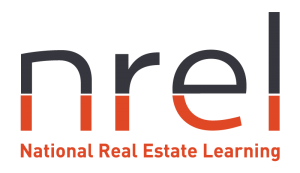Commercial vs. Residential Real Estate Careers: Which Path is Right for You?
Australia’s real estate market offers a range of investment opportunities in both commercial and residential sectors, each with its own set of benefits and challenges. Understanding these sectors’ unique characteristics, supported by statistical insights, can help investors make well-informed decisions to leverage Australia’s dynamic property landscape.
Commercial Real Estate in Australia
Commercial real estate includes properties used for business purposes such as office spaces, retail outlets, industrial facilities, and hospitality venues.
Advantages:
- Competitive Yields: Commercial properties in Australia often deliver higher rental yields compared to residential assets. According to the Australian Property Institute, commercial properties in major cities like Sydney and Melbourne can yield up to 6% annually, compared to around 3% for residential properties.
- Stable Demand: Driven by economic growth and urbanisation, the demand for commercial properties remains robust. The National Property Trust reports that office and retail sectors, in particular, benefit from steady occupancy rates due to continued corporate expansion and economic activity.
- Long-Term Leases: Commercial leases generally span longer periods than residential leases, offering investors predictable and stable income streams. A recent report by JLL indicates that the average lease term for office spaces is around 5-7 years, compared to 12 months for residential properties.
- Diversification Opportunities: Investors can diversify their portfolios with various asset types within the commercial sector, including office buildings, retail spaces, industrial warehouses, and hospitality venues.
Challenges:
- Market Volatility: Commercial real estate values are susceptible to market fluctuations influenced by economic cycles, geopolitical events, and sector-specific trends. Research from CBRE highlights that commercial property values can vary significantly based on economic conditions and industry performance.
- Capital Intensity: Initial investment in commercial real estate is substantial, often requiring significant capital for acquisition, maintenance, and tenant improvements. The average cost of acquiring a commercial property in Sydney is approximately $7,000 per square meter, compared to $3,000 for residential properties.
- Tenant Turnover: Higher tenant turnover and vacancy rates can affect profitability, especially in the retail and hospitality sectors. According to a survey by Colliers International, retail property vacancy rates in major cities have fluctuated between 5-8% in recent years.
- Regulatory Compliance: Commercial properties must comply with various regulations, including zoning laws, building codes, and leasing legislation. The Australian Building Codes Board outlines strict compliance requirements for commercial property developments and operations.
Residential Real Estate in Australia
Residential real estate includes properties for human habitation, such as houses, apartments, townhouses, and condominiums.
Advantages:
- Strong Capital Growth: Historically, residential properties in Australia have shown significant capital growth. CoreLogic reports a 5-year annualised growth rate of 6.5% for houses and 5.9% for apartments across major cities.
- Accessibility: Residential real estate generally has lower barriers to entry for investors. Various financing options, including mortgages and government-backed loans, make it accessible. Recent data from the Australian Bureau of Statistics shows that over 60% of new property buyers utilize mortgages.
- Stable Rental Market: Demand for rental properties remains strong due to population growth and urban migration. According to Domain, rental yields in capital cities average around 4% for houses and 5% for apartments.
- Tax Benefits: Investors may benefit from tax incentives such as negative gearing, capital gains tax discounts, and depreciation deductions. The Australian Taxation Office estimates that negative gearing could provide tax savings of up to 30% for property investors.
Challenges:
- Market Affordability: Rising property prices in major cities are outpacing income growth, creating affordability issues. The Rental Affordability Index highlights that over 30% of renters in Sydney spend more than 30% of their income on housing.
- Supply Constraints: Housing supply issues, including land availability and construction costs, continue to challenge the market. The Housing Industry Association notes that new housing supply has not kept pace with population growth in several regions.
- Regulatory Changes: Investors must navigate evolving regulations, including tax reforms, lending restrictions, and rental market regulations. Recent changes to the National Rental Affordability Scheme and tax laws have impacted investor strategies.
- Housing Diversity: The Australian residential market is diverse, with variations in housing types, locations, and tenure arrangements. This diversity can pose challenges in market segmentation and property management.
Choosing Your Investment Path
When choosing between commercial and residential real estate, align your investment goals, risk tolerance, and financial resources with the unique attributes of each sector.
- Commercial real estate offers higher potential returns and professional relationships but involves greater complexity and capital investment.
- Residential real estate provides more accessible entry points and emotional appeal but requires active management and may face market saturation issues.
Ultimately, your decision should be guided by your investment objectives, time horizon, and risk comfort level. By understanding the specific advantages and challenges of each asset class, you can build a diversified and resilient real estate portfolio.
For expert advice and tailored investment strategies, consult with real estate professionals who can help navigate Australia’s dynamic property market.



